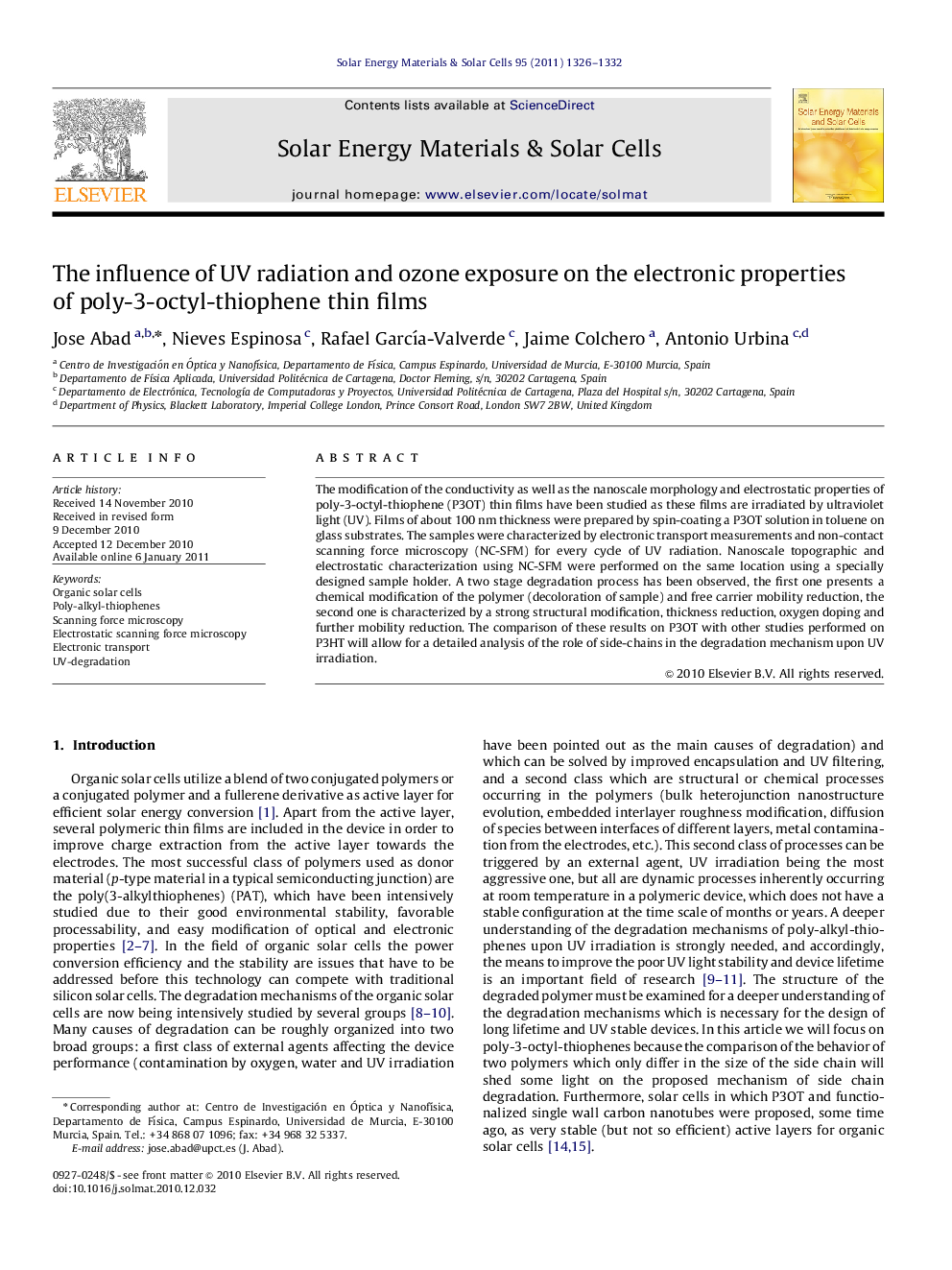| کد مقاله | کد نشریه | سال انتشار | مقاله انگلیسی | نسخه تمام متن |
|---|---|---|---|---|
| 79055 | 49347 | 2011 | 7 صفحه PDF | دانلود رایگان |

The modification of the conductivity as well as the nanoscale morphology and electrostatic properties of poly-3-octyl-thiophene (P3OT) thin films have been studied as these films are irradiated by ultraviolet light (UV). Films of about 100 nm thickness were prepared by spin-coating a P3OT solution in toluene on glass substrates. The samples were characterized by electronic transport measurements and non-contact scanning force microscopy (NC-SFM) for every cycle of UV radiation. Nanoscale topographic and electrostatic characterization using NC-SFM were performed on the same location using a specially designed sample holder. A two stage degradation process has been observed, the first one presents a chemical modification of the polymer (decoloration of sample) and free carrier mobility reduction, the second one is characterized by a strong structural modification, thickness reduction, oxygen doping and further mobility reduction. The comparison of these results on P3OT with other studies performed on P3HT will allow for a detailed analysis of the role of side-chains in the degradation mechanism upon UV irradiation.
Figure optionsDownload as PowerPoint slideResearch highlights
► The UV/ozone degradation on P3OT thin films was investigated by means of non-contact dynamic surface force microscopy and I–V transport measurements.
► A two-stage degradation process of the polymer under UV exposure has been observed, namely chemical and morphological modifications.
► In the early stages, free carrier mobility reduction as a result of the chemical modification occurred. Followed by a strong structural modification, thickness reduction, oxygen doping and further mobility reduction.
Journal: Solar Energy Materials and Solar Cells - Volume 95, Issue 5, May 2011, Pages 1326–1332